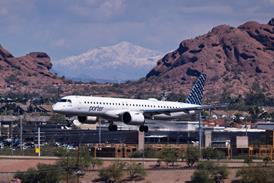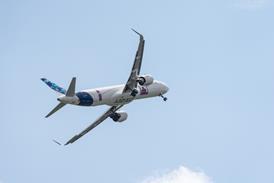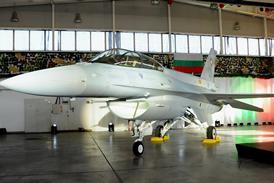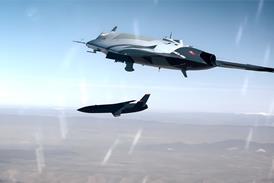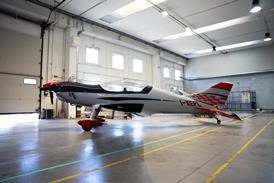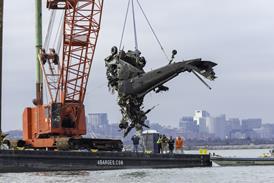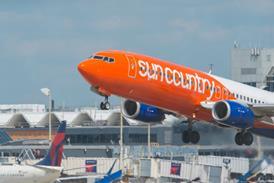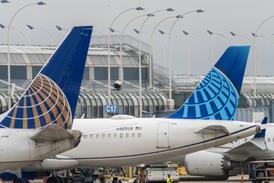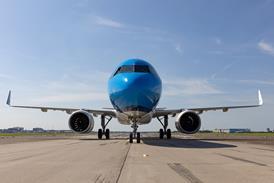Lithuanian investigators have disclosed that the flaps of a Boeing 737-400 freighter remained retracted during its final approach to Vilnius, before the jet sank below the glideslope and crashed short of the runway.
Some 10min before the crash – involving a Swiftair aircraft on 25 November last year – the cockpit-voice recorder detected an “audible double click”. This coincided with the engine-driven pump and electric pump of hydraulic system ‘B’ switching off.
The ‘B’ hydraulic system powers several systems including the trailing-edge flaps and autopilot B.
Investigators state in preliminary findings that the autopilot disconnected, and attempts to re-engage it were unsuccessful. As a result the first officer continued to fly the aircraft manually with the autothrust active.
The captain spent some time trying to contact Vilnius approach control, but used the wrong frequency and had to be corrected.
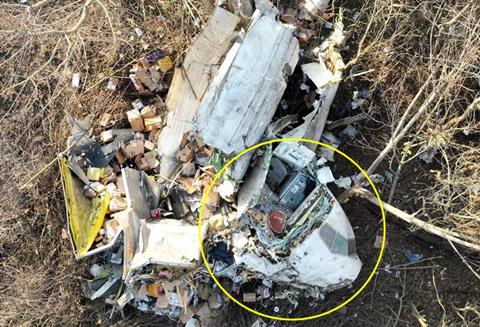
Around 5min after the hydraulic system was turned off, the crew completed the approach checklist but did not complete the landing checklist.
The first officer also asked whether engine anti-ice was on, which the captain confirmed, although the flight-data recorder shows anti-ice was not activated. The engine anti-ice switches are directly above those for the hydraulic system pumps on the overhead panel.
Both pilots realised the aircraft needed to reduce speed. The captain extended the speedbrakes and advised the first officer to raise the nose, before the crew started selecting flap settings.
Although the flap handle was moved, flight data shows the flaps did not deploy.
The aircraft entered the final approach at 2,700ft but, although the first officer called for ‘flap 15’ and extension of the landing-gear, the flaps remained retracted.
According to the inquiry, the captain “stated that there were still very fast and that the [first officer] had to reduce speed first”.
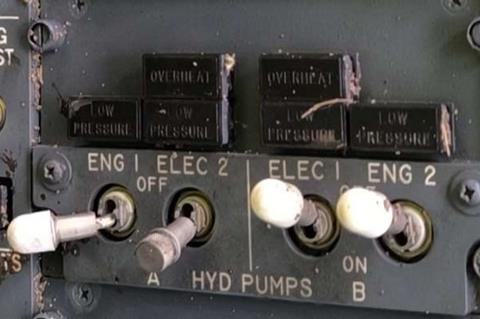
After approach control instructed the crew to contact the tower, about 4nm from the runway, another radio mix-up meant the aircraft was neither on the tower nor approach frequency.
When the captain made visual contact with the runway, he told the first officer again to reduce speed.
Flight-data recorder information shows that the 737’s pitch and its angle-of-attack were increasing, and the first officer recognised the flaps were still retracted just as the aircraft’s stick-shaker triggered, warning of a possible stall.
The ground-proximity warning system also issued a ‘sink rate’ and ‘pull up’ warning.
Although the crew called for a go-around, and engine power started to increase, a terrain alert sounded and the aircraft collided with the ground. Of the four occupants, the captain was fatally injured and the other three received serious injuries.
Lithuania’s transport accident investigation division has yet to reach conclusions over the cause. The country’s prosecutor general had recently sought to question the surviving pilot, after stating that a “de-activated hydraulic system” which controlled the flaps had probably led to the crash.


